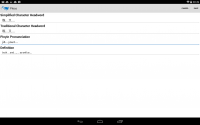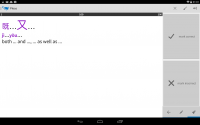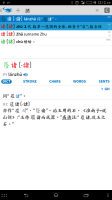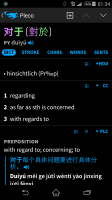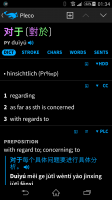If you were a firsthand witness to my reality, you'd understand it's a basic usability thing, just as I described--but all I can do is report. I suggested two ways of thinking of it because either way can be gainsaid: "one more" is always different for everyone, so if you really fear that, why not add an expert mode for longtime, experienced users and accumulate "one mores" there. Perhaps the one-more's won't materialize.
And come on, of course I also use the dictionary to study Chinese--and often the definition screen is also useful on the fly. So a compact definition has a lot of utility, as well as a readable headword offering a needed real-time capability. I might also suggest profiles, where the user can select between suites of settings, as many apps do. If one wants to, profiles are easily gainsaid also. Personally, I think expert settings and profiles are overkill in the present situation, but they're both common ways of doing things that do answer your objections. My guess is that this one really does fill in the last missing font size in the way the dictionary presents itself to the user.
And come on, of course I also use the dictionary to study Chinese--and often the definition screen is also useful on the fly. So a compact definition has a lot of utility, as well as a readable headword offering a needed real-time capability. I might also suggest profiles, where the user can select between suites of settings, as many apps do. If one wants to, profiles are easily gainsaid also. Personally, I think expert settings and profiles are overkill in the present situation, but they're both common ways of doing things that do answer your objections. My guess is that this one really does fill in the last missing font size in the way the dictionary presents itself to the user.

